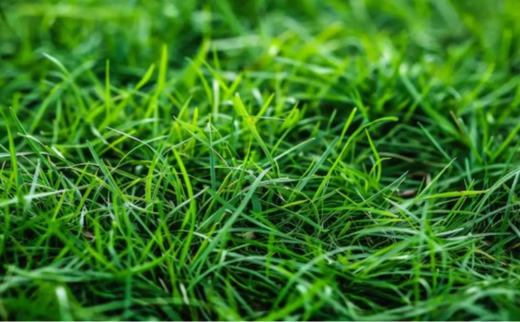Durva/ Conch Grass/ Bermuda Grass/ Cynodon dactylon Pers. – Ayurvedic Uses
Abstract
Cynodon dactylon (L.) Pers., commonly known as Bermuda grass or Durva, is a perennial grass widely revered in Indian culture and extensively used in traditional medicine. It holds great significance in Ayurveda for its healing, cooling and purifying properties. Rich in phytoconstituents, this grass is used to manage a range of ailments, including bleeding disorders, respiratory issues, skin problems and urinary tract conditions. Both internally and externally, it serves as a potent natural remedy. Durva (Cynodon dactylon Linn. Pers., Family: Poaceae) is a herbaceous, creeping grass found widely across India, growing up to elevations of 1500 meters in the lower Himalayan regions. It is one of the ten sacred medicinal plants known as Dashapushpam, holding significant cultural and therapeutic importance in the traditional practices of Kerala. The species is valued for its extensive medicinal properties and various other beneficial uses.

Introduction
Durva grass (Cynodon dactylon) holds deep religious significance in Hinduism, particularly in the worship of Lord Ganesha, the remover of obstacles. Every Hindu ritual or pooja traditionally begins with offerings to Ganesha and Durva is considered one of his most favoured items. This fast-spreading, resilient grass thrives in tropical and subtropical climates and is widely utilised in Ayurveda for its cooling potency (Sheeta Veerya) and astringent taste (Kashaya Rasa), making it beneficial in managing heat-related and blood disorders. Apart from its spiritual value, contemporary studies highlight its medicinal potential, including anti-inflammatory, antimicrobial and antioxidant effects, making it a key plant in holistic health practices. This article outlines its botanical profile, Ayurvedic relevance, and medicinal applications.
Scientific Classification
- Kingdom: Plantae
- Division: Angiosperms
- Class: Monocots
- Order: Poales
- Family: Poaceae
- Genus: Cynodon
- Species: Cynodon dactylon (L.) Pers.
Synonyms
- Namaskarya – An herb worthy of reverence and salutation; considered highly auspicious and especially dear to Lord Ganesha.
- Shataparva – Denotes a plant with numerous branching roots.
- Shatavalli – Indicates a plant bearing hundreds of slender, spreading shoots.
- Harita – Refers to its characteristic lush green colour.
- Amruta, Vijaya, Mahaushadhi – Celebrated as a potent, beneficial, and life-enhancing medicinal plant.
- Jaya, Mangalya, Subhaga, Shiva, Shiveshta, Mangala, Shanta – Reflect their peaceful and auspicious nature, beloved by Lord Shiva.
- Bhutahantri – Known for its ability to ward off negative energies, pathogens, and harmful microbes.
- Doorvaa, Bhaargavi, Shatparvaa, Tiktaparvaa, Shatviryaa, Sahastravirya, Shitaa, Anantaa, Golomi – Various names highlighting its strength, bitterness, cooling effect, and unending vitality.
- Shadvala, Gauri, Shambhavi, Shyama – Names representing its divine, feminine, and auspicious qualities.
- Darma, Shara, Nala – Together known as Durvatraya, symbolising the sacred triad of the Durva plant.
Vernacular Names
- Hindi name – Doobh
- English name – Conch Grass, Bermuda Grass, Indian Doab
- Bengali name – Durva
- Gujarati name – Drow
- Kannada name – Garike
- Marathi name – Harali
- Punjabi name – Dubda
- Tamil name – Arugam Pullu
- Telugu name – Goriya Gaddi
- Fiji – Kabuta
- France – Chiendent Dactyle, Chiendent Pied-De-Poule, Grand Chiendent
- Germany – Hundezahngras
- Hawaii – Manienie
- India – Doob, Durva, Haryali, Kabbar, KarukaOulli, Talla
- Indonesia – Jukut Kakawatan, Gigirinling, Rumput Bermuda, Rumput Grinting, Sukit Grinting
- Israel – Yablith
- Laos – Hnha:z, Phe:d
- Malaysia – Rumput Minyak
- Myanmar – Mye-Sa-Myet
- Nepal – Motie Molulu, Dubo
- Philippines – Kawad-kawad, Bakbaka, Kapot-kapot
- Portugal – Capim-Bermuda
- Spain – Chepica Brave, Came De Niño, Pate De Perdiz, Gramilla Blanca
- Suriname – Griming, Tigriston
- Thailand – Ya-Phraek
- Vietnam – Cochi, Coon
- Africa – Kweekgras
- Bangladesh – Durba
- Cambodia – Smao Anchien
- Canada – Ambate-Hullu, Graikae
Habitat
Cynodon dactylon is a hardy perennial grass found growing naturally in warm climates across the globe, particularly in India, Africa, Australia, Southern Europe and the southern United States. It thrives in a variety of soil types, including sandy, loamy and even nutrient-poor soils. Commonly seen in lawns, roadsides, fields and open grasslands, it spreads vigorously through underground rhizomes and above-ground stolons, forming dense mats.
Morphology
Durva is a low-growing herb that spreads along the ground through slender, stem-like runners, from which fine roots emerge and anchor the plant to the soil. These creeping stems allow it to cover large areas. The leaf blades are narrow, measuring about 0.5 to 4 inches in length, and range in colour from green to greyish-green. Its upright stems can reach heights of 1 to 30 cm (0.39–11.81 inches) and are slightly flattened, often showing a purplish tint. The plant bears small flowers that vary in colour from pale green to purple. The flower spikes form in clusters of two to six at the stem tips, with each spike measuring 2 to 5 cm (0.79–1.97 inches) long. Durva is commonly found across India, particularly in regions with a temperate climate.
Varieties
According to Raj Nighantu
- Neela Durva
- Shweta Durva
- Maalaa Durva
- Gandaali Durva
According to Bhavprakash Nighantu and Kaiydeva Nighantu
- Nila Durva
- Sweta Durva
- Ganda Durva
According to Another Researcher
- Var. suberectum
Classical Categorisation
- According to Charaka Samhita – Prajasthapana (a group of herbs that support conception and maintain pregnancy)
- According to Dhanvantari Nighantu – Karaveeradi Varga
- According to Kaiyadeva Nighantu – Oushadhi Varga
- According to Raj Nighantu – Shalmalyadi Varga
- According to Shodala Nighantu – Karaveeradi Varga
- According to Bhavprakash Nighantu – Guduchyadi Varga
Ancient Verses
नीलदूर्वा हिमा तिक्ता मधुरा तुवरा हरेत् ।
कफपित्तास्त्रवीसर्पतृष्णादाहत्वगामयान् ॥
(Bhavprakash Nighantu Guduchyadi Varga 173)
According to the above shloka, Durva Grass has cold potency, bitter, astringent and sweet taste. It is effective in the management of Kapha, herpes, excess thirst, burning sensation and skin diseases.
Ayurvedic Properties
- Taste (Rasa) – Bitter (Tikta), Sweet (Madhur), Astringent (Kashaya)
- Physical property (Guna) – Light (Laghu)
- Potency (Veerya) – Cold Potency (Sheet)
- Post-digestion effect (Vipaka) – Sweet (Madhur)
- Effect on tridosha – Balance Pitta and Kapha dosha
Therapeutic Properties
- Asrajit – Beneficial in managing blood-related disorders such as abscesses, various skin conditions, and bleeding issues like menorrhagia and nasal bleeding
- Visarpa – Refers to conditions like herpes
- Trushna – Indicates abnormal or excessive thirst
- Daha – Characterised by a burning sensation, seen in conditions like gastritis, neuropathies, or burning in the eyes
- Tvagamaya – Pertains to a wide range of skin diseases
Systemic Actions
- External – It acts as a styptic, alleviates burning sensations, promotes wound healing and enhances skin complexion. The paste is recommended for external use in conditions like wounds, haemorrhoids, etc. Also beneficial in headaches caused by aggravated Pitta dosha, erysipelas, urticaria, hyperpigmentation and similar skin conditions.
Internal Uses
- Nervous System – Enhances cognitive functions and soothes the nervous system. Useful in conditions involving nervous debility, insanity, epilepsy and various mental health disorders.
- Digestive System – Possesses absorbent properties. Indicated for managing vomiting, intense thirst, diarrhoea, haemorrhoids and related issues.
- Circulatory System – Functions as a styptic and blood purifier. Effective in treating bleeding disorders and sexually transmitted infections. Its juice is specifically useful in controlling bleeding.
- Excretory System – Promotes diuresis and is beneficial in relieving dysuria.
- Reproductive System – Supports pregnancy retention, is beneficial in preventing threatened abortion, reduces uterine bleeding and nourishes the developing fetus.
- Satmikarana (Rejuvenation) – Acts as an anti-toxic and nourishing agent (jeevaniya), promoting vitality and overall nourishment.
- Tvak (Skin) – Widely indicated in a variety of skin ailments.
Chemical Composition
- Β-sitosterol
- Stigmasterol
- Ferulic acid
- Hydroquinone
- Syringic acid
- p-Coumaric acid
- Vanillic acid
- p-Hydroxybenzoic acid
- o-Hydroxyphenylacetic acid
- Vitexin
- Luteolin
- Apigenin
- Orientin
- Catechin
- Rutin
- Quercetin
- Myricetin
- Kaempferol
- Violaxanthin
- Lutein
- Zeaxanthin
- β-Carotene
- Chlorophyll b
- Magnesium oxide
- Phosphorus oxide
- Calcium oxide
- Sodium oxide
- Potassium oxide
- Vitamin C
- Sitosterol
- Triacontane
- Docosanol
- Tetracosanol
- Hexacosanol
- Octacosanol
- Eicosanoic acid
- Triticin
- Docosanoic acid
- 2-(4′-Hydroxyphenyl) propionic acid
- 2-(3′-Methoxy-4′-hydroxyphenyl) propionic acid
- Hexadecanoic acid
- 3-Methoxy-4-hydroxybenzoic acid
- Micro-amylase
- β-Amylase
- Glycerine
Modern Overview
Effect In Bleeding Disorders
Cynodon dactylon (Durva grass) contains a range of bioactive constituents including alkaloids, β-sitosterol, carotene, flavonoids, glycosides, triterpenoids, vitamin C and palmitic acid. These compounds contribute to its astringent, hemostatic and wound-healing properties. The fresh juice, rich in flavonoids and triterpenoids, helps constrict blood vessels and promotes clot formation, making it effective in controlling bleeding from cuts and wounds. β-sitosterol and vitamin C further support tissue repair and reduce inflammation at the injury site. Thus, Durva acts as a natural remedy for external and internal bleeding disorders.
Practical Uses
- A paste made from fresh Durva (Cynodon dactylon) is applied topically over wounds and ulcers to control bleeding and accelerate wound healing.
- In cases of conjunctivitis, the fresh juice of the plant is used as eye drops to alleviate redness, burning sensation and to support the healing of the condition.
- For epileptic seizures and psychosomatic disorders, 15–20 ml of fresh Durva juice is administered orally as a supportive remedy.
- In conditions like bleeding haemorrhoids and blood-streaked diarrhoea, a cold infusion or decoction of Durva is given in a dose of 50 ml to help manage bleeding and soothe the digestive tract.
- To manage nasal bleeding (epistaxis), the fresh juice of Durva is administered as nasal drops to arrest bleeding.
- In cases of menorrhagia and uterine prolapse, a decoction of Durva is prescribed in doses of 50–60 ml. It helps reduce excessive bleeding and strengthens the uterine muscles.
- For burning urination and general burning sensations in the body, a cold infusion of Bermuda grass is given in a dose of 50–60 ml to provide cooling and symptomatic relief.
- In skin conditions such as scabies, herpes, and skin discolouration, the paste of Durva is applied over the affected areas to reduce symptoms and promote skin healing.
- In the event of a scorpion sting, 30–40 ml of fresh Durva juice is administered orally to help counteract the toxic effects of the venom.
Part Used
- Whole plant
Dosage
- Juice- 5-10 ml
- Powder- 3-6 gm
Ayurvedic Medicines
- Durvadi Kwath
- Durvadi Ghrit
- Durvadi Taila
Planet Ayurveda Medicines
- Shonit Stambhak Vati
- Clotoplan Syrup
- Trinpanchmool Ghan Vati
- Nettle-Durva Capsules
- Bol Parpati
- Hemostop- B Powder
Conclusion
Durva grass (Cynodon dactylon) is a highly revered medicinal plant in traditional Ayurvedic medicine, known for its wide range of therapeutic applications. It is rich in bioactive compounds such as flavonoids, phenolics, carotenoids and essential minerals. It offers potent anti-inflammatory, antiviral, diuretic, hemostatic and wound-healing properties. Its versatile use in both internal and external therapies, ranging from managing bleeding disorders, skin diseases and urinary conditions to treating epilepsy and promoting uterine health, underscores its significance as a natural healer. With its accessibility, safety and broad-spectrum efficacy, Durva grass continues to serve as a valuable herbal remedy in promoting health and restoring balance in the body.



